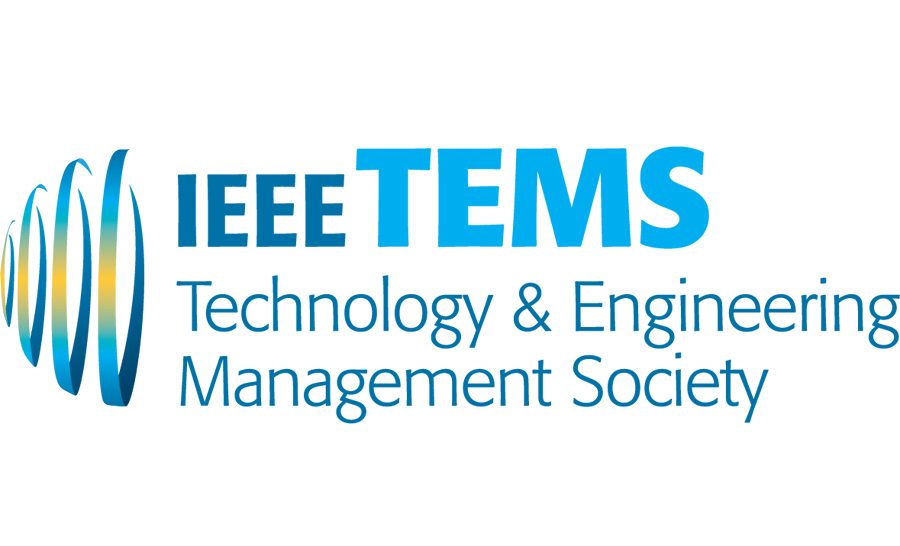Reprinted from the August 2016 issue of Computer. Used with permission. The questions posed were developed by the Computer Society.
James A. Jefferies
Jim Jeffe ries worked at AT&T and Lucent Technologies for 33 years in engineering and executive positions, including fiber-optic cable development and manufacturing, quality assurance, and supply chain management. He managed the engineering teams that delivered the first commercial fiber-optic cables for the Bell System. Additional experience includes major technology transfers, innovative manufacturing development, and competitive strengthening of distribution operations and export of US-built products. Jefferies also worked in the entrepreneurial sector, teaming with fellow Stanford business school graduates as COO for USBuild.com. Jefferies received an MS in Engineering Science from Clarkson University, and attended the Stanford University Graduate School of Business as a Sloan Fellow and received an MS in management. Visit www.jamesajefferies.com.
ries worked at AT&T and Lucent Technologies for 33 years in engineering and executive positions, including fiber-optic cable development and manufacturing, quality assurance, and supply chain management. He managed the engineering teams that delivered the first commercial fiber-optic cables for the Bell System. Additional experience includes major technology transfers, innovative manufacturing development, and competitive strengthening of distribution operations and export of US-built products. Jefferies also worked in the entrepreneurial sector, teaming with fellow Stanford business school graduates as COO for USBuild.com. Jefferies received an MS in Engineering Science from Clarkson University, and attended the Stanford University Graduate School of Business as a Sloan Fellow and received an MS in management. Visit www.jamesajefferies.com.
Wanda Reder

Wanda Reder is the Chief Strategy Officer for S&C Electric Company and has provided technical leadership for electric utilities, primarily in power delivery, throughout her 29-year career. She has served on the IEEE Governing Board, the IEEE Foundation Board, and founded IEEE PES Scholarship Plus Initiative, a program that has provided over 900 power engineering scholarships since 2011.
Wanda, an IEEE Fellow, was the first female President of IEEE Power & Energy Society in 2008-2009, received the IEEE Richard M. Emberson Award in 2014 and is a TAB Hall of Honor recipient. She is a member of the US Department of Energy’s Electricity Advisory Committee and of the National Academy of Engineering. Visit www.wandareder.com.
Question 1
What is your position on the proposed IEEE constitutional amendment?
James A. Jefferies: The Board has endorsed the amendment and it is being presented for membership ratification. The amendment removes a requirement that delegates elected to the assembly would automatically also serve on the Board. It adds language allowing assembly delegates to have direct input to bylaws changes and sets guidelines for Board diversity. The executive director as a nonvoting member is not unusual in a large organization. This is an enabling change that allows for but does not initiate alternative Board structures. Change could occur after 2020 when those already elected finish their full terms.
You would be for this amendment if you see value in change and alternative governance choices and be opposed if you think the current structure works well or feel more detail is essential. I would only support future changes that ultimately lead to maintaining the empowerment of members while respecting and engaging the opinions of all stakeholders.
Wanda Reder: This fall, IEEE membership votes on a Constitutional Amendment. If approved, it allows for separation of an IEEE delegate from an IEEE director, and for all Board of Directors members to be elected by the full eligible IEEE voting membership. Additionally, the IEEE executive director will become a nonvoting member of the Board of Directors.
I believe careful consideration should be given whether to vote “for” or “against” the Constitutional Amendment. It shifts the approval authority to make significant structural changes from IEEE membership to the Board of Directors, the thought being that it positions the Institute to better respond to a complex and dynamic world moving forward. My action is guided by ensuring that IEEE remains member-governed and viable, with policies that enable transparency in a structure that has a balance of activity, technical, and regional representation. To learn more about my background and vision, visit www.WandaReder.com.
Question 2
What is the current state of IEEE finances and how do you propose to ensure that IEEE remains sound financially? Can this be done without increasing infrastructure charges on societies like the IEEE Computer Society?
James A. Jefferies: IEEE has been running deficit budgets with revenue growing but expenses exceeding revenue for consecutive years. There have been committed investments in operations and publications platforms but their value needs to be justified. The excess expenditures have come from withdrawals from reserves. To restore balance will mean a lower rate of expense growth (below that of revenue) and vigilance on controlling overhead costs. I would demand a greater level of transparency in financial reporting, eliminating “below the line” spending and using a single budget reflecting all costs with greater fiscal discipline. I would push for direct assignment of charges to operating units using or benefitting as much as possible and infrastructure cost to be minimum. This is also the path to setting better innovation priorities. Infrastructure costs are appropriate for some activities but they should be reviewed frequently and justified, with societies and operating units being part of that process.
Wanda Reder: IEEE has approved a deficit budget for several years and is increasingly dependent upon interest from reserves. Meanwhile, membership has been declining, the revenue growth rate is not what it was in recent years, and overheads are increasing. These factors are creating financial pressures and have increased the infrastructure charge to the point that it is difficult for some Societies to make ends meet.
For long-term financial success, IEEE needs to control overheads, sunset fatigued activity, and offer new services that are valued. Examples of possible new services include transforming technical content to customize information as described in the response to Question 3, and offering competency-based education that is IEEE certified—especially in emerging multidisciplinary areas. By focusing on controls, priorities, and new value streams, IEEE can achieve a balanced budget with reduced infrastructure charges, thereby allowing Societies to increase investment in membership services.
Question 3
The widespread open access movement has been disruptive to our model of publications, which has traditionally been a significant portion of our operating income. What do you propose to do to deal with the increasing prevalence of open access and its impact on professional societies and their publication income? In general, do you envision introducing any new offerings to increase our attractiveness to current members and bring in new colleagues?
James A. Jefferies: Whenever there is a disruption to a business model, it is necessary to examine all impacts. With open access, the cost of publishing is shifted and post-publication revenue opportunity changes. Competing in this space requires lower cost publication alternatives that match the new revenue. Other ways to compete include an emphasis on superior quality, by assuring we have “go-to” publications—particularly in leading-edge or disruptive technology changes where value may be highest. It also may be possible to pursue multidisciplinary publications that leverage IEEE’s breadth and support a differentiation strategy. Long term, our reputation could provide a foundation for new services such as archiving or search.
Regarding new products, it is always important to look at potential revenue opportunities from member products and services. Some areas already identified to us by industry include targeted educational programs and technology trend information with an application perspective.
Wanda Reder: Open Access is growing and becoming an increased threat to the IEEE publication business. In response, we need to transform from a content model to a service model in order to generate future revenue streams that offset financial risk. A possible service offering is delivering the right information to the right user on demand. This requires a responsive end-user focus and the ability to customize packaging of information based upon unique member interests. A comprehensive view of member interests will be needed that can be created through aggregated data sources. A material of interest would be provided from enhanced search capabilities that sift through IEEE content and potentially many other sources. Value can be increased with the inclusion of trending information through business analytic capabilities. Successful execution will be dependent upon searchable content that extends well beyond Xplore and close volunteer–staff collaboration. This vision holds tremendous promise for IEEE’s future.
Question 4
Much of IEEE operations are centered on its many specialized Societies. While this approach has proven effective in many regards, it has also created unhealthy competition, turf battles, etc. How do you propose dealing with this mindset?
James A. Jefferies: I believe mindset is the right word. IEEE is more than a collection of autonomous, independent units. Societies are specialized but they also have some common needs and challenges. We are at our best when we have active collaboration, communication, and cooperation among our units. With a joint focus on member value, we can share education, career, policy, and other high-interest materials between our units. This can come in many forms including shared events, shared development costs, cross-discipline conferences, contests, and joint meetings.
I would be a purposeful encourager, supporter, and convener of cooperative events. I believe we are a professional membership organization and we have a common connection in the high-level mission of IEEE. Our value is multiplied in our cooperation.
Wanda Reder: IEEE is dedicated to enabling people to discover, develop, and deliver innovations that often are at the intersection of technical disciplines typically represented in Societies. Collaboration needs to be facilitated across Societies, bringing the right expertise together, at the right time, to advance innovation.
IEEE Future Directions Committee sponsors initiatives aimed at achieving this goal. From 2010 to 2014, I pioneered the first, IEEE Smart Grid, which has 100,000+ followers involving the Computer Society and 13 other partnering IEEE organizational units. It included a global development of several smart-grid resources such as the IEEE Transactions on Smart Grid and the Innovative Smart Grid Technologies conference series. This successful venture established a model that other initiatives, such as Cloud, Big Data, and Internet of Things, have followed. Lessons from these initiatives need to be leveraged to incentivize a collaborative environment that enables virtual, timely connections to advance innovation.










Add Comment